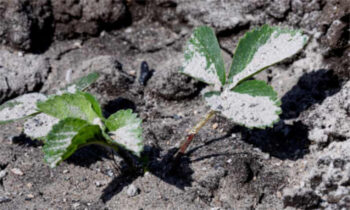Ash for a New Life

By Fr Gerard Whiteford SM
On 20 December 2021, an eruption began on Hunga Tonga-Hunga Ha’apai, a submarine volcano in the Tongan group of islands. The eruption reached a very large and powerful climax nearly 4 weeks later, on 15 January 2022. Hunga Tonga is 65 km (40 mi) north of Tongatapu, the country's main island. Much of the island of Tongatapu was covered in volcanic ash. An interesting news item some days following the January eruption mentioned that many residents were collecting the ash from the streets and putting the ash on their gardens!
Volcanic sites are frequently the most fertile sites on earth. Volcanic ash's primary use is that of a soil enricher. Once the minerals in ash are washed into the soil by rain or other natural processes, it mixes with the soil to create an andisol layer. This layer is highly rich in nutrients and is very good for agricultural use; the presence of lush forests on volcanic islands is often as a result of trees growing and flourishing in the phosphorus and nitrogen-rich andisol.
It triggered a memory of my own from my childhood; the home I lived in had an open fireplace which was used extensively throughout the chilly winter months. When cleaning out the fireplace the residue ash was frequently spread onto the garden. Apparently, wood ash is an excellent source of lime and potassium for the garden. Not only that, using ashes in the garden also provides many of the trace elements that plants need to thrive.
As we approach Ash Wednesday there is the opportunity for each of us to re-imagine the ritual of the blessing and reception of the ashes, re-imagining the ashes not just as a symbol of sinfulness and the need for repentance, rather also as a symbol of nourishment, a symbol of enrichment, a symbol of fertility.
 Entries(RSS)
Entries(RSS)